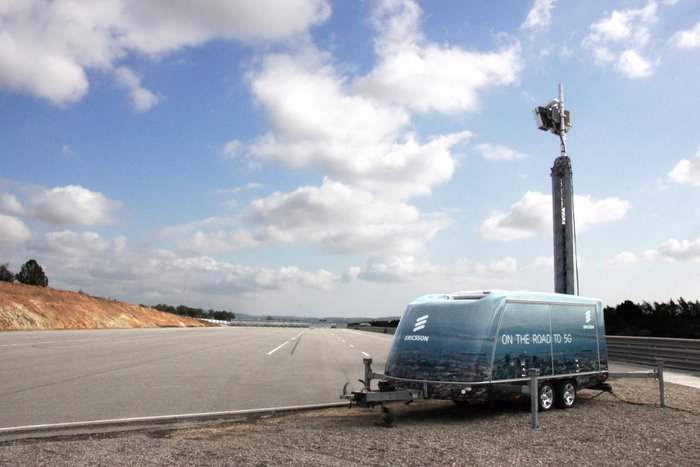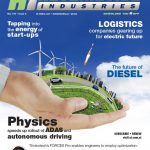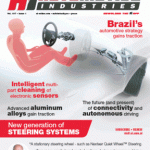Vehicles are going to be connected from the start of the production process through their entire lifespan thanks to advances being made in 5G technology.
Factory-floor 5G and 4G technology and systems for production are being developed by Audi and Ericsson. Following the signing of a Memorandum of Understanding, specialists from both companies will run field tests at the “Audi Production Lab” in Gaimersheim, Germany.
Frank Loydl, Chief Information Officer at AUDI AG, says “the fully networked factory will have a significant impact on the production of the future. A powerful network architecture that can respond in real time is of decisive importance for us. With our partner Ericsson we are testing the opportunities offered by 5G technology for industrial applications in the smart factory.”
Erik Ekudden, Group CTO at Ericsson, says: “Ericsson is already running 5G industry programs all over the world to help manufacturers boost productivity and create new business opportunities. This project is a great opportunity to see what is possible when we bring 5G into an automobile production environment to enable smart wireless manufacturing.” In the first phase of the project Audi and Ericsson will test a latency-critical application using wirelessly connected production robots that are equipped with a gluing application.
Automotive Industries (AI) asked Erik Ekudden, Senior Vice President and Chief Technology Officer at Ericsson, when 5G will become mainstream.
Ekudden: The fact is that the first commercial networks are being rolled out now, and we have strong forecasts that it will be rolled out in the rest of the world over the next two to five years. The scale of the introduction of 5G and the availability of 5G are the fundamental reasons why the automotive and transportation sectors are so interested to work with 5G.
AI: What infrastructure are you installing at the Audi facility?
Ekudden: Audi is exploring the use of 5G, 5G edge compute, and 5G local networking. We will first install a 5G test system that starts with 4G and has additional 5G plug-in functionalities. Through network slicing we can guarantee reliability and eliminate latency in a manufacturing plant. We will be applying the lessons learned from other manufacturing situations and from our own factories where we have implemented test systems to connect robots and production lines.
AI: How will the new standards in Vehicle-To-Vehicle and Vehicle-To-Infrastructure transform information and services within highways and cities?
Ekudden: The infrastructure is out there, and is already being used for some of the vehicle to applications for information sharing and the like. What we see going forward is that there will be a stronger focus on V2X cellular technology. There is a strong push to mature LTE as a robust V2X technology for vehicle to infrastructure and, in some cases, vehicle to other moving vehicle. Today we are really talking about LTE for these early use cases.
AI: What impact would the fully networked factory have on productivity?
Ekudden: It would be wrong of me to give you a number because we’ve seen cases where we are reducing friction and where we can lower the cost by 15%. Just by connecting the tooling on the assembly line in our own factory in Estonia we are not only cutting cost and lead time, we are also getting all the statistics that in the later stages allows us to trace faults back. This kind of precision hasn’t been available before, especially in the area like the car industry.
We have also seen cases where we drastically reduce lead times and unplanned downtime by improving flow through providing the right information at the right time. Then we can talk about a 50-90% reduction in certain flows. These are not uncommon numbers across industries. We don’t see this only on the manufacturing side. We see it in all enterprises where we’ve made these studies.
AI: The connected vehicle market is being hailed as one of the highest growth areas of the Internet of Things. What is the potential application revenue?
Ekudden: What you see now is connected vehicles. In five years’ time we are expecting a very large proportion of all the new vehicles to be connected by default. I am happy to say that we are commercializing 5G this year for consumers and for residential use. On the other hand, 5G for manufacturing enterprises is a really big opportunity for our industry and certainly for Ericsson. This technology is very well suited for even the demanding enterprise requirements, and that wasn’t the case with the old 3G and 4G systems. There are applications that will save costs in manufacturing, logistics and transportation. At the same time we are talking about completely new customer-friendly services.
AI: What other 5G industry programs are you already running?
Ekudden: We have been in this space for some time. We have a device connectivity platform product that is connecting a large part of the existing car fleet, and is also available for trucks, transportations and logistics. We are using the connected vehicle cloud to manage both connectivity and data.
We’ve worked with some of the most advanced companies in autonomous driving. In terms of advanced warning systems, we work with SCANIA as well as many others in Germany. We are still at the stage where we are co-developing the solutions. In Sweden we are also very engaged in the trucking, logistics and maintenance using the same product.
AI: How will 5G technologies help smart cities reduce congestion?
Ekudden: Here 4G and 5G work hand in hand. We see a gradual evolution of the infrastructure. Higher performance and lower latency will help reduce congestion by having centrally orchestrated information from as many vehicles and as many infrastructure points as possible. We’ve shown with our partners at the CES in Las Vegas how you can reduce congestion while at the same time saving lives by reducing traffic accidents through better traffic management. That is why it is important to get to scale with as many vehicles as possible making use of communication technology. We don’t have to wait for another technology that will take a long time to integrate into every vehicle, can build what is coming out now with both LTE and 5G.
AI: What’s next for Ericsson?
Ekudden: We are working a lot now with 5G, but I think that the infrastructure is becoming much more important than connectivity. And this is coming more from the automotive side. What we believe is taking the next step which is to make the network platforms that are powered by artificial intelligence. That means the intelligence that the network platform initially gathers from operational data can be leveraged and used in the automotive sector, other manufacturing industries, transport and logistics.
So, in our case we are using this network platform with its intelligence to ease the journey that every other industry is taking now. We expect to have roughly a billion 5G subscriptions in only five years’ time. That is phenomenal uptake. It will benefit our customers because the platform is not only about connectivity. With AI the platform can actually help any industry to digitize. So that is the mid-term projection. If you go even further out, I’d say that for us is also about enabling completely new applications. Utilizing the platforms for better user experiences, defining completely new devices, and designing completely new user interfaces with intuitive interactions. While that may be a little farther into the future, it is an area where these platforms will really change the world.














































 Using physics to accelerate implementation of ADAS and autonomous driving functions
Using physics to accelerate implementation of ADAS and autonomous driving functions A disruptive industry being disrupted
A disruptive industry being disrupted Aluminum is driving the future of e-mobility
Aluminum is driving the future of e-mobility Reports of the death of diesel are exaggerated
Reports of the death of diesel are exaggerated Port flips the switch on investment to handle electric vehicles
Port flips the switch on investment to handle electric vehicles Solid-state LiDAR technology being fine tuned in the field
Solid-state LiDAR technology being fine tuned in the field


